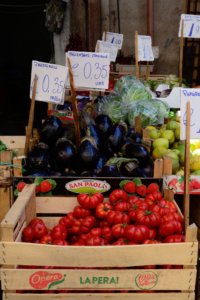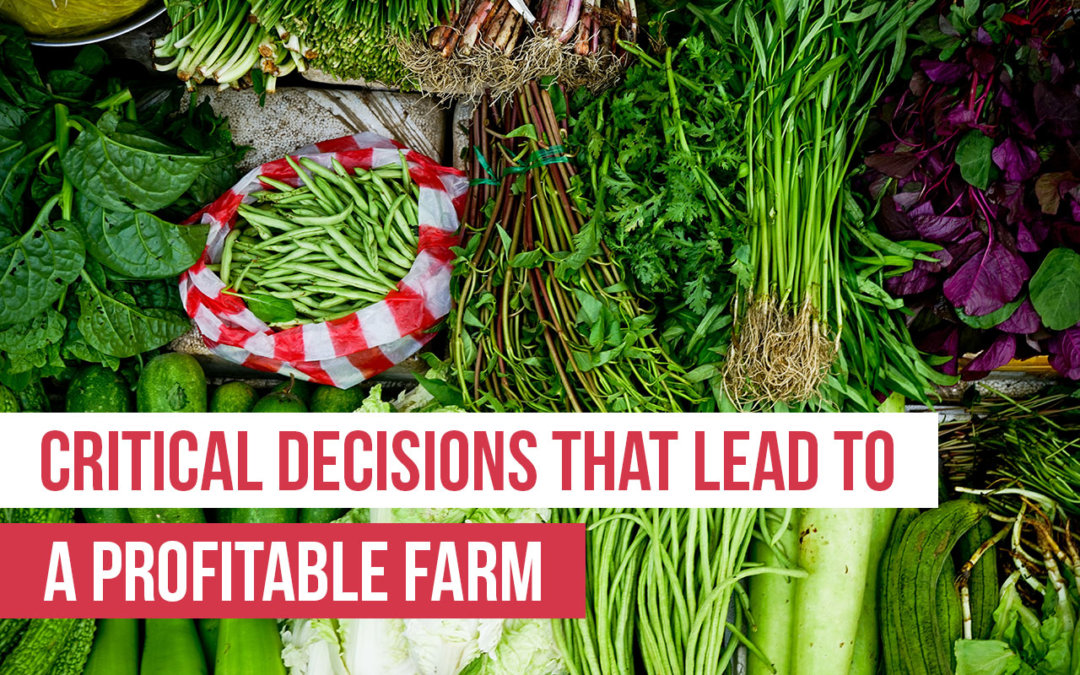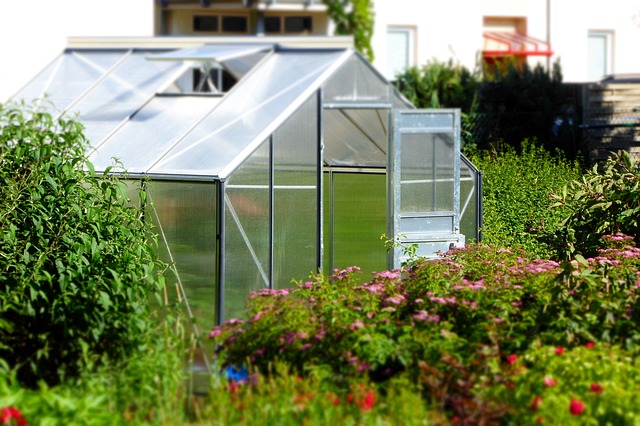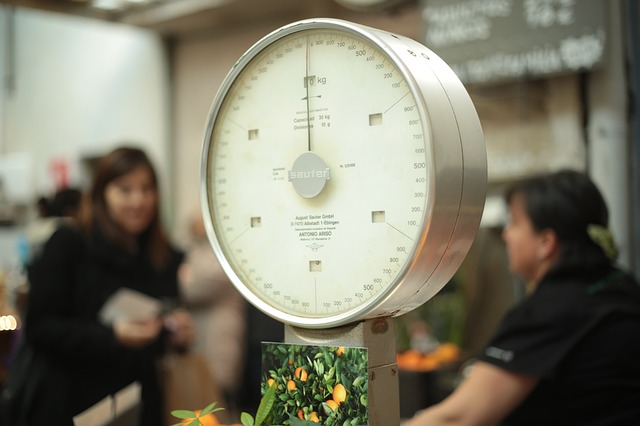 Regardless of how you grow, the profitability of your farm will depend on three main factors: demand, viability, and profit margin. Lots of new farmers focus the majority of their efforts on their ability to grow a single crop and forget to do research on the other factors. In this article, learn how to appropriately address questions like the following:
Regardless of how you grow, the profitability of your farm will depend on three main factors: demand, viability, and profit margin. Lots of new farmers focus the majority of their efforts on their ability to grow a single crop and forget to do research on the other factors. In this article, learn how to appropriately address questions like the following:
- What can you sell a lot of? What does your market want?
- What are you good at growing?
- What has a good profit margin?
For a profitable farm, you must consider all three. Let’s start with how you know you can sell something well.
What can you sell a lot of?
This is the most important thing: if people don’t want it, you won’t make money off of it. It may seem obvious, but it’s easy to get excited and overlook the importance of demand.
Imagine that you’ve just invested a lot of money in starting up a farm. You’ve tried a few different crops but discovered that you’ve been able to grow cilantro especially well. Since you can grow it so successfully, you decided to overhaul your whole farm and plant tons of cilantro. Then you discover that your market does not want to buy cilantro. Now, your whole farm is taken up by rows and rows of cilantro, and you’ve got nothing to do with it. You’re out of money and have no way to make it back.
This is why market research is so crucial. You need to know what people will buy from you not just once, but many times. You also need to know how much they want to consume on a regular basis so you don’t end up with a lot of wasted produce. This is called market volume. Aim for high market volume—lots of people want to consume lots of what you’re growing.
But market research isn’t just looking at numbers. Spend a little bit of time talking to buyers and looking at what other people are growing. Is there a gap you could fill with your unique product? Could you alleviate customers’ pain points by offering a better product at a better price? Take the Market Research for Farmers course to learn more about effective strategies.
In addition to high market volume, you want to choose a product that has low supply competition. If everybody grows cilantro and sells it at the market, you probably don’t want to depend on cilantro for the success of your farm, even if you can grow it well.
Insider tip: Wholesale retailers—think grocery stores and restaurants—are great places to find information on demand because they’ll have consistent records where you can get an idea of what they’ve had success with in the past. This information is slightly more difficult to find in something like a farmers’ market, where different vendors will have different experiences based on a variety of factors.
>>Related: How to Engage With Customers at the Farmers’ Market <<
Low supply competition means that there are fewer people in your area growing it. This leads us to what you can grow well.
What can you grow well?
In your particular climate, with your particular capabilities, what grows best? Are you good at it? Do you understand it well? Are you excited about it?
Now that you know what people want, you’ll need to successfully execute production. Say you find out that the market in your area has a high demand for spinach. You figure it’s a pretty good bet, and throw everything you’ve got into growing spinach but you just cannot get the little buggers to grow. You are not going to make money.
You won’t know what you’re good at growing—or even if you like it—until you give it a try. You will likely experience some error, so when you’re starting out keep it fairly small in order to minimize cost and risk.
That said, this type of success isn’t just dependent on your personal farming abilities. It will largely be influenced by where you farm, what type of farm environment you have, and what type of system you’re growing in.
Additional factors to consider are the costs and resources that are available to you. Do you have affordable access to the resources you need to build a successful farm? Unreliable or inconsistent availability of resources—like nutrients, plugs, and system repair parts—can throw a wrench in your production as well as your relationships with your customers.
Even if you can get reliable access, think about the total cost. Whether or not you have great profitability, you’ll still need to make sure your costs are as low as possible.
Finally, if you don’t like doing it, even if all the other factors are there, it’s possible that you won’t do it well. Find something that you enjoy!
What has a good profit margin?
First of all, what is profit margin?
Profit margin is the money you have left over after you pay to cover all of your costs. Some crops can provide better profit margins than others. Think of it this way:
When you set up a farm, you pay capital expenses (CapEx) to acquire all of your system components, like media, lights, and structural components. Then, when your farm is running, you have operating expenses (OpEx) like water, electricity, and nutrients. The CapEx plus the OpEx is what you pay to create your product (the plants). You then sell the product, and the money you receive in return should be a larger amount than what you originally paid. The difference (what you sold your product for minus what you paid to create it) is your profit margin. Ideally, you have a positive profit margin.
During your market research process, you should also consider discovering what the possible profit margins are for a variety of crops. Research the nutrient and water demand of the crop in addition to the market demand.
Essentially, you want a crop that is cheap to produce, but that people will pay more for. Fortunately, being a hydroponic or aquaponic grower gives you a unique advantage because your product is likely higher in quality than what your customers have had previously.
All of your profit margins contribute to your net profit, which is the total amount of money you’ll keep as a result of your sales. Much of the profit you make from selling your produce will need to be put back into your farm to keep it running and producing.
Business is about trade-offs and compromises, and you get to play the exciting game of finding the most profitable compromise for your business. For example, you could grow and sell a high volume of produce at a lower price, or more specialized produce at lower volumes and higher prices.
There are ways to make all of these cases work, and it will depend on your business model.
Decide based on your business model
Different markets and market types will provide different pros and cons when it comes to profit margin. Think carefully about the trade-offs between high volume versus high prices, and do your research—which works best for you?
Making decisions
If you do decide to focus your farming efforts on a single crop, ensure that:
- your market wants it,
- that you can grow it well,
- and that you can make money off it.
Say you discover that you are really good at growing hydroponic cucumbers, for example, and you have a lot of market demand for them. You may be able to get away with only growing and selling cucumbers. While these are three critical decisions that can lead your farm to profitable success, there are other factors you’ll need to consider as well, such as inputs, seasons, and environmental controls.
Interested in learning more? Take these courses:






Troutner Farms is dedicated to the planning required for the future of farming, we are seeking avenues of networking to be proactive in the education needed to be successful in vertical farming.Please give our website a visit to help us help on a larger scale. Thank you! https://troutnerfarms.com/vertical-farming/
Great, good point.
Great write-up.